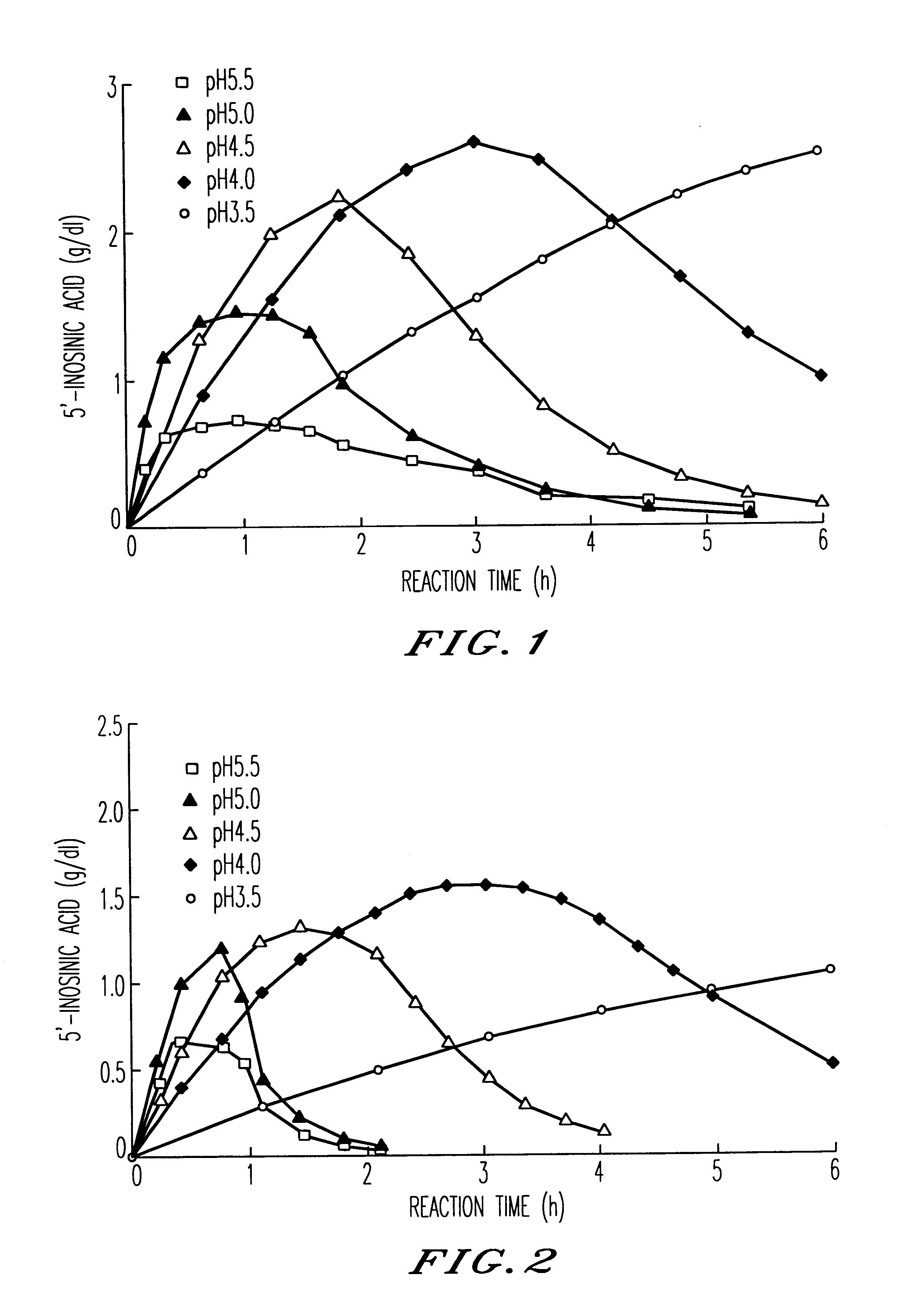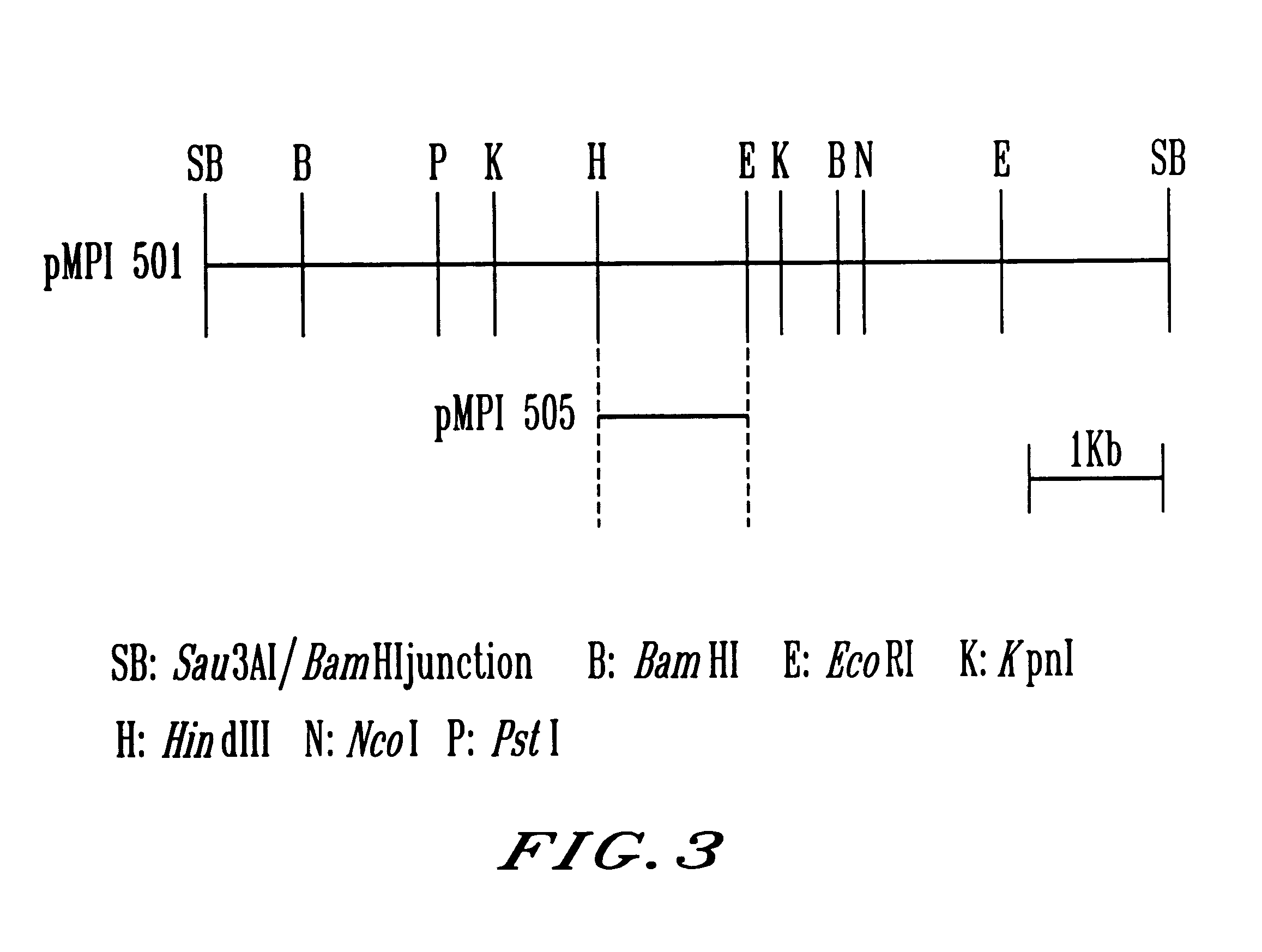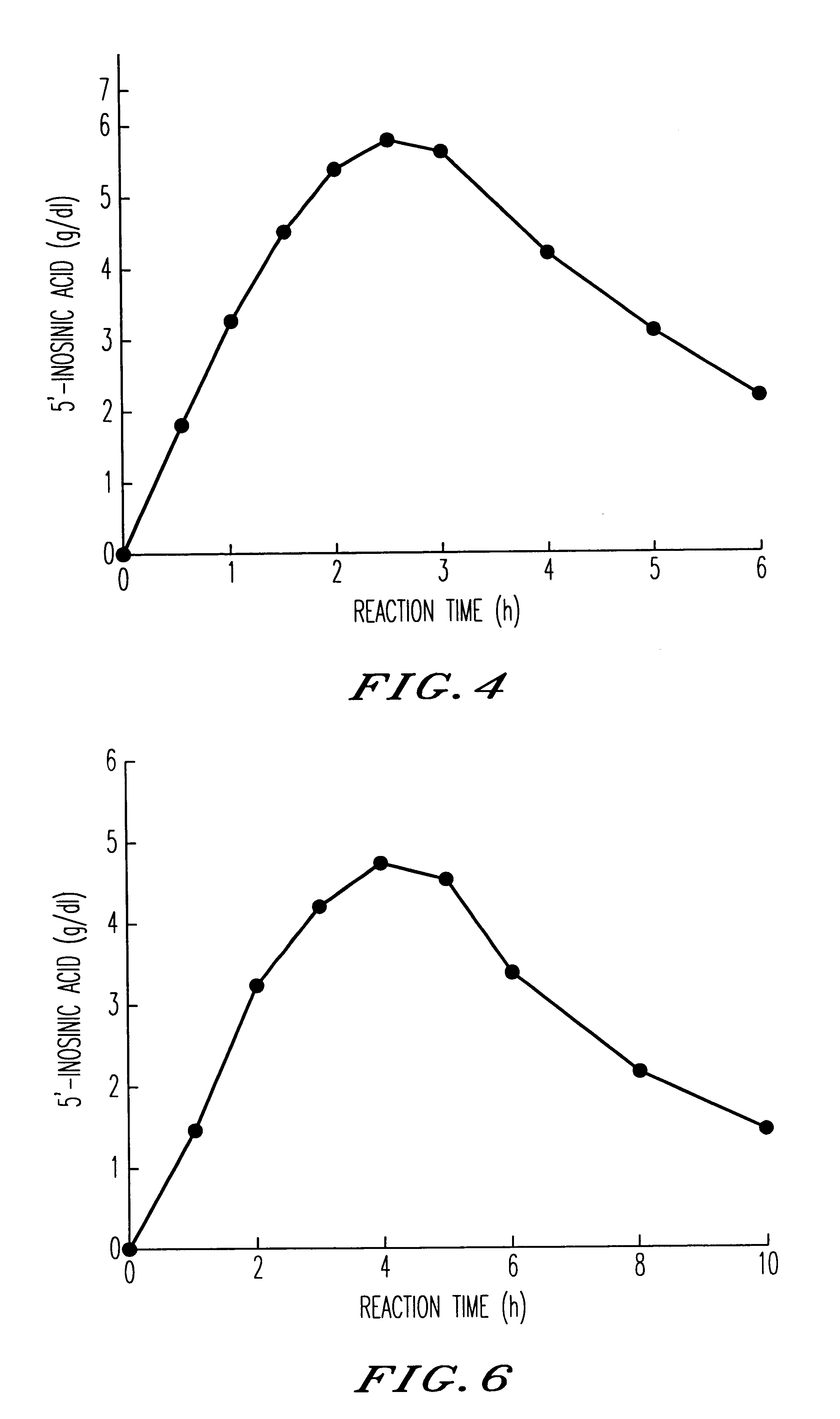Method for producing nucleoside-5'-phosphate ester
a technology of phosphate ester and nucleoside, which is applied in the direction of enzymology, biochemistry apparatus and processes, transferases, etc., can solve the problems of inability to obtain a sufficient yield, degraded substrate portion, and insufficient methods to produce nucleoside-5'-phosphate esters. , to achieve the effect of inexpensively and efficiently producing nucleoside-5'-phosphate esters
- Summary
- Abstract
- Description
- Claims
- Application Information
AI Technical Summary
Benefits of technology
Problems solved by technology
Method used
Image
Examples
example 1
Purification and Characterization of Acid Phosphatase Derived from Morganella morganii
A nutrient medium (pH 7.0, 50 ml) containing 1 g / dl of peptone, 0.5 g / dl of yeast extract, and 1 g / dl of sodium chloride was poured into Sakaguchi flasks (500 ml), which were sterilized at 120.degree. C. for 20 minutes. A slant culture of Morganella morganii NCIMB 10466 was inoculated to each of the flasks once with a platinum loop, which was cultivated at 30.degree. C. for 16 hours with shaking. Microbial cells (about 3,000 g), which were harvested from a culture by centrifugation, were suspended in 100 mM potassium phosphate buffer (1 L, pH 7.0). A ultrasonic treatment was performed at 4.degree. C. for 20 minutes to disrupt the microbial cells. The treated suspension was centrifuged to remove the insoluble fraction. Thus, a cell-free extract was prepared.
Ammonium sulfate was added to the cell-free extract so that 30% saturation was achieved. Appeared precipitate was removed by centrifugation, and...
example 2
Phosphorylation Reaction of Various Nucleosides by Acid Phosphatase Sample Derived from Morganella morganii
Sodium pyrophosphate (10 g / dl) and inosine, guanosine, uridine, or cytidine (2 g / dl) as a phosphate group acceptor were dissolved in sodium acetate buffer (pH 4.0), to which the enzyme sample prepared in Example 1 was added so that its concentration was 50 units / dl. The reaction mixture was incubated at 30.degree. C. for 3 hours while maintaining pH at 4.0. The amount of nucleoside-5'-ester produced by the reaction is shown in Table 2.
Produced nucleotide contained only nucleoside-5'-ester. Production of nucleoside-2'-ester and nucleoside-3'-ester by-products was not observed at all.
TABLE 2 Amount Produced Nucleoside Product (g / dl) Inosine 5'-inosinic acid 2.60 Guanosine 5'-guanylic acid 1.90 Uridine 5'-uridylic acid 1.30 Cytidine 5'-cytidylic acid 0.98
example 3
Production of 5'-Inosinic acid from Various Phosphate Compounds as Phosphate Group Donors by Acid Phosphatase Sample Derived from Morganella morganii
Inosine (2 g / dl) and sodium tripolyphosphate, sodium polyphosphate (trade name: Polygon P, produced by Chiyoda Chemical), disodium phenylphosphate, or disodium carbamyl phosphate (10 g / dl) as a phosphate group donor were dissolved in sodium acetate buffer (pH 4.0), to which the enzyme sample prepared in Example 1 was added so that its concentration was 50 units / dl. The reaction mixture was incubated at 30.degree. C. for 3 hours while maintaining pH at 4.0. The amount of 5'-inosinic acid produced by the reaction is shown in Table 3.
5'-Inosinic acid was efficiently produced and accumulated by using any of the phosphate group donors. However, the accumulated amount of 5'-inosinic acid was the highest when sodium polyphosphate was used as the phosphate group donor.
TABLE 3 Produced 5'-inosinic Phosphate group donor acid (g / dl) Sodium tripoly...
PUM
| Property | Measurement | Unit |
|---|---|---|
| pH | aaaaa | aaaaa |
| temperature | aaaaa | aaaaa |
| pH | aaaaa | aaaaa |
Abstract
Description
Claims
Application Information
 Login to View More
Login to View More - R&D
- Intellectual Property
- Life Sciences
- Materials
- Tech Scout
- Unparalleled Data Quality
- Higher Quality Content
- 60% Fewer Hallucinations
Browse by: Latest US Patents, China's latest patents, Technical Efficacy Thesaurus, Application Domain, Technology Topic, Popular Technical Reports.
© 2025 PatSnap. All rights reserved.Legal|Privacy policy|Modern Slavery Act Transparency Statement|Sitemap|About US| Contact US: help@patsnap.com



